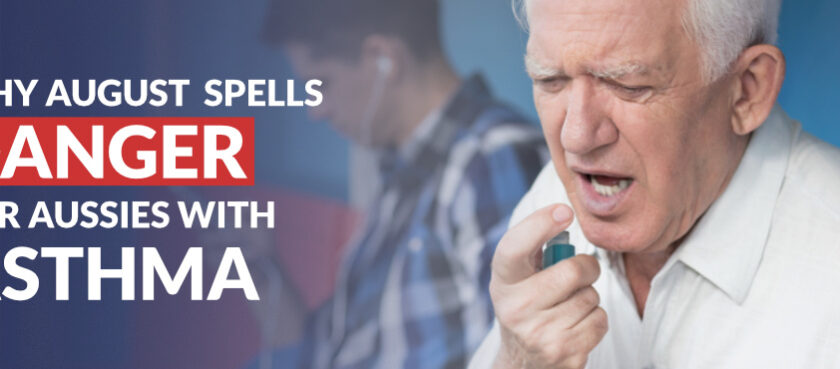The First Aid Australia News+
Asthma First Aid Tip: Why August spells Danger for Aussies with Asthma
- August 14, 2017
- Posted by: Ben Cleaver
- Category: First aid

[et_pb_section bb_built=”1″ admin_label=”section”][et_pb_row admin_label=”row” background_position=”top_left” background_repeat=”repeat” background_size=”initial”][et_pb_column type=”4_4″][et_pb_text _builder_version=”3.0.106″ background_layout=”light”]
A whopping 2.5 million Australians (1 in 9) have Asthma, a lung condition that significantly affects a person’s breathing and quality of life, and a severe asthma attack can be life-threatening.
Exercise, allergies and cigarette smoke are some of the most common asthma triggers, but it’s the common cold that’s behind 80% of bad asthma attacks.
This and other triggers like cold air, flu and chest infections is why late winter is the most dangerous time for those suffering with Asthma and why the majority of asthma related deaths, some 400 every year, occur during this time.
With that in mind, let’s be vigilant to recognise and respond to worsening asthma symptoms before things get out of hand!
WORSENING ASTHMA SIGNS:
- Shortness of breath
- Wheezing (noisy breathing)
- Chest tightness
- Dry cough
SEVERE ASTHMA SYMPTOMS MAY INCLUDE:
- Condition worsens quickly or after medication
- Difficulty speaking
- Blue lips
- Skin sucking in around the ribs and collar bone
- Severe anxiety
[/et_pb_text][et_pb_text _builder_version=”3.0.51″ background_layout=”light” text_orientation=”left” border_style=”solid” custom_padding=”30px|30px|30px|30px” use_border_color=”on” border_color=”#25c43d” border_width=”4px” border_color_all=”#25c43d” border_width_all=”4px” border_style_all=”solid”]
FIRST AID FOR ASTHMA:
- Sit the person down in an upright position. Stay calm and give reassurance.
- Give reliever medication according to their asthma action plan or if not available… Give 4 puffs of their blue/grey puffer using a spacer if available. Allow them to breathe 4 breaths from the spacer after each puff.
- Wait 4 minutes while monitoring their symptoms before giving another 4 puffs if needed.
- Call 000 if symptoms are severe or even if the thought crosses your mind (better to be safe than sorry!)
[/et_pb_text][et_pb_text _builder_version=”3.0.51″ background_layout=”light” text_orientation=”left” border_style=”solid”]
References & further reading:
https://www.nationalasthma.org.au/asthma-first-aid
https://www.nationalasthma.org.au/understanding-asthma/what-are-asthma-triggers
https://www.asthmaaustralia.org.au/qld/about-asthma/what-is-asthma-/statistics
ANZCOR Guideline 9.2.5 – First Aid for Asthma
[/et_pb_text][/et_pb_column][/et_pb_row][/et_pb_section]
Author:Ben
Leave a Reply Cancel reply
You must be logged in to post a comment.